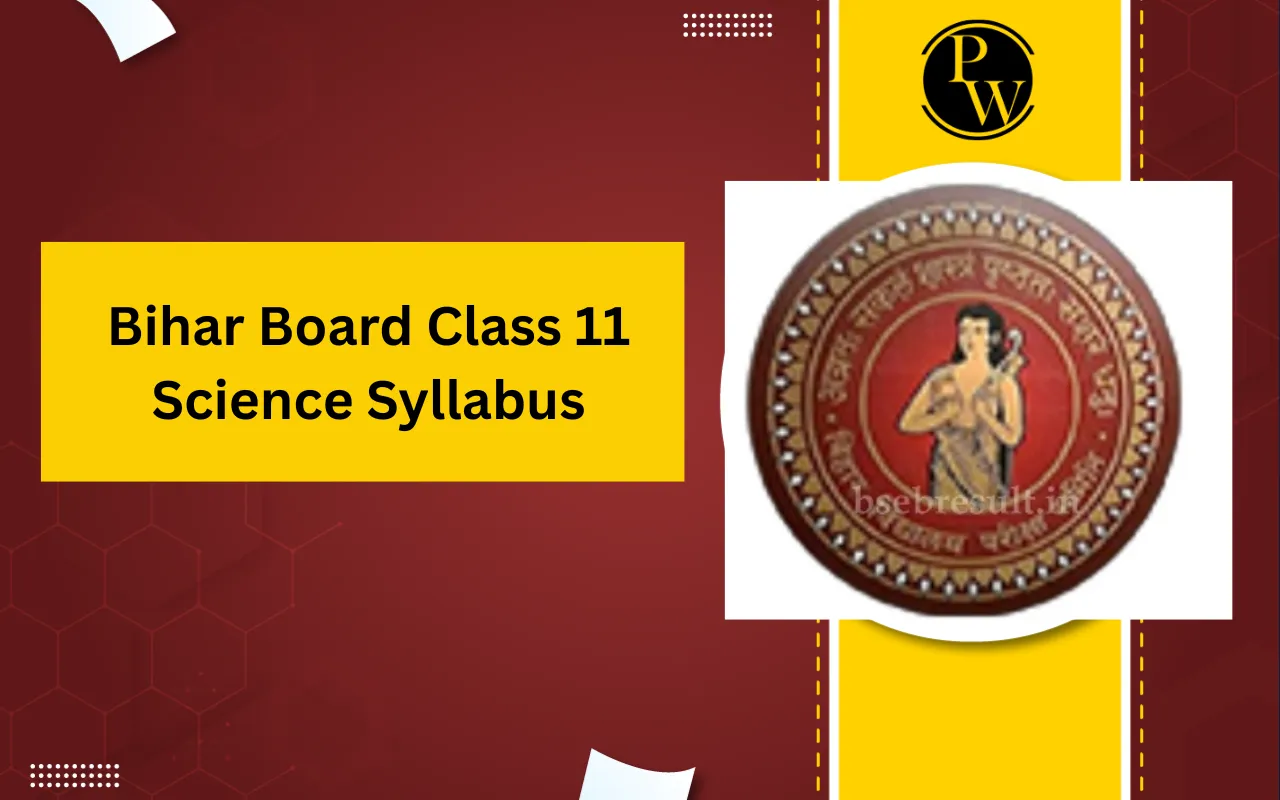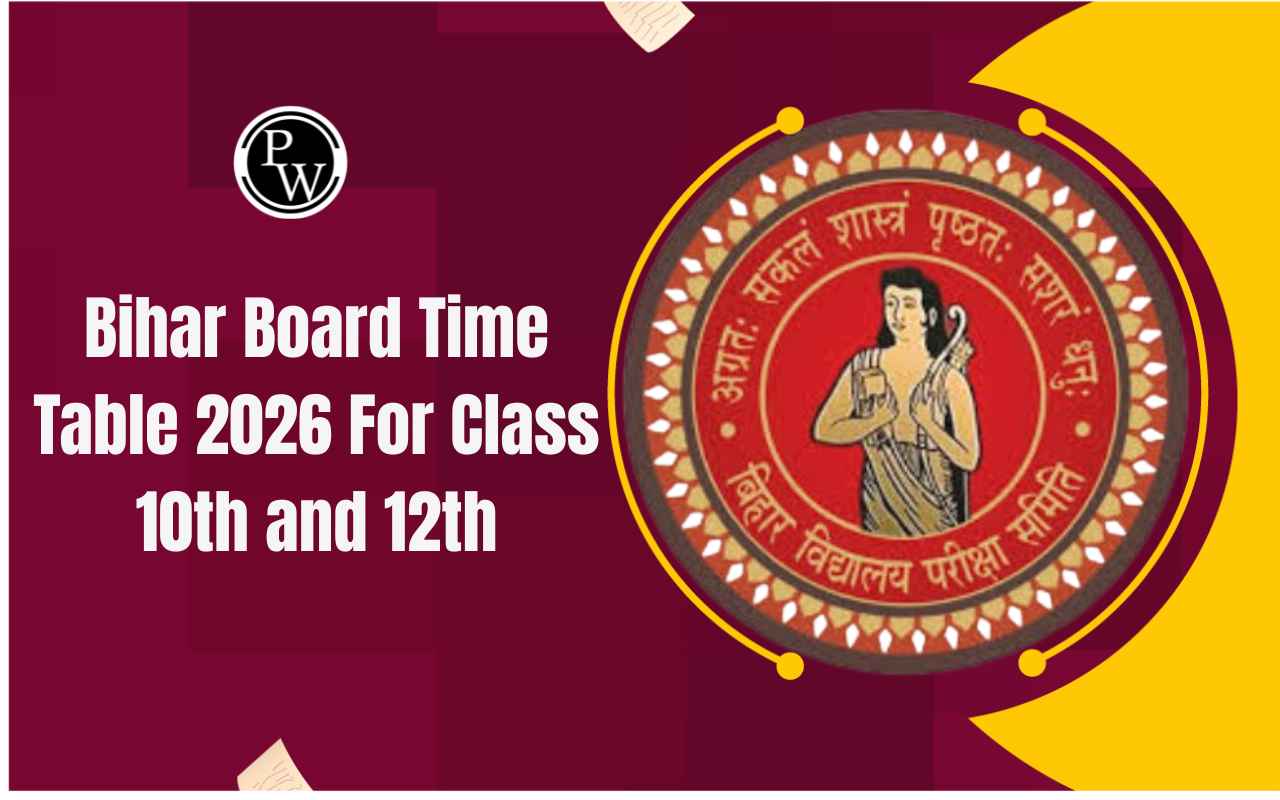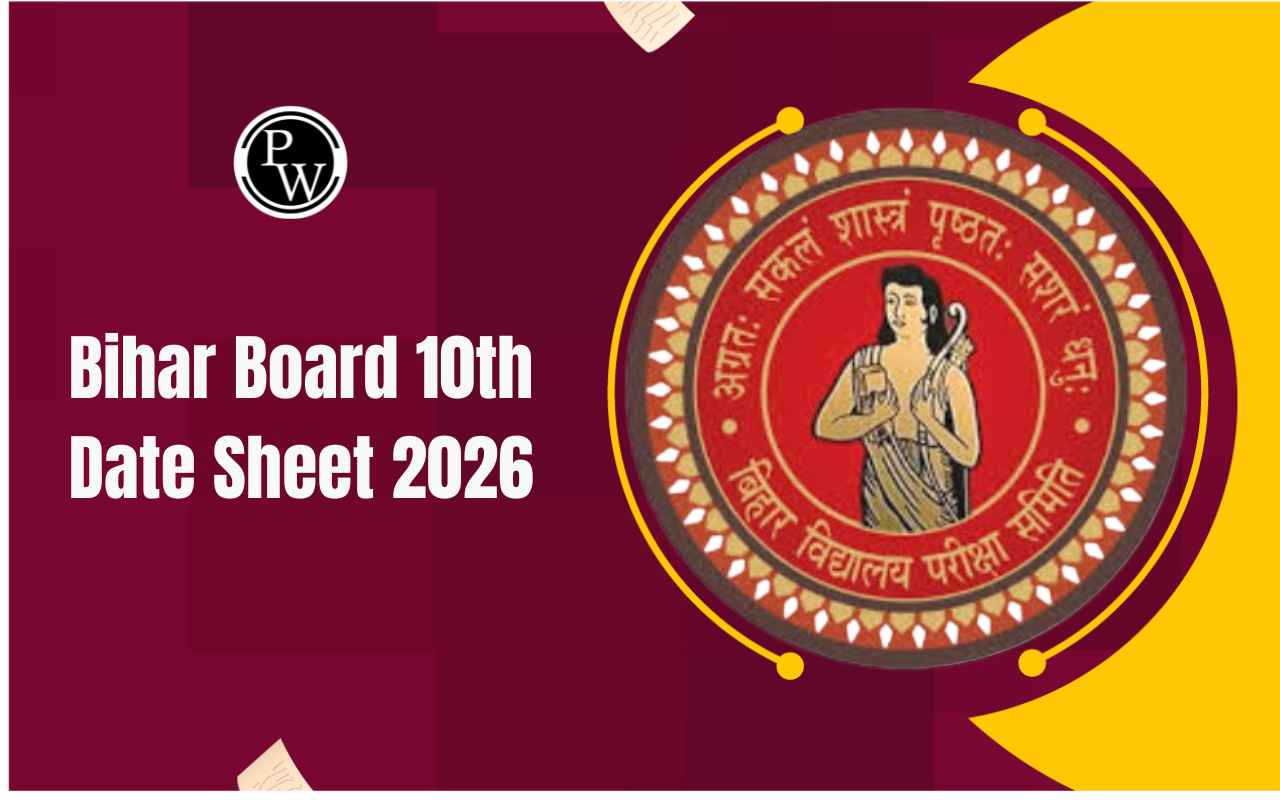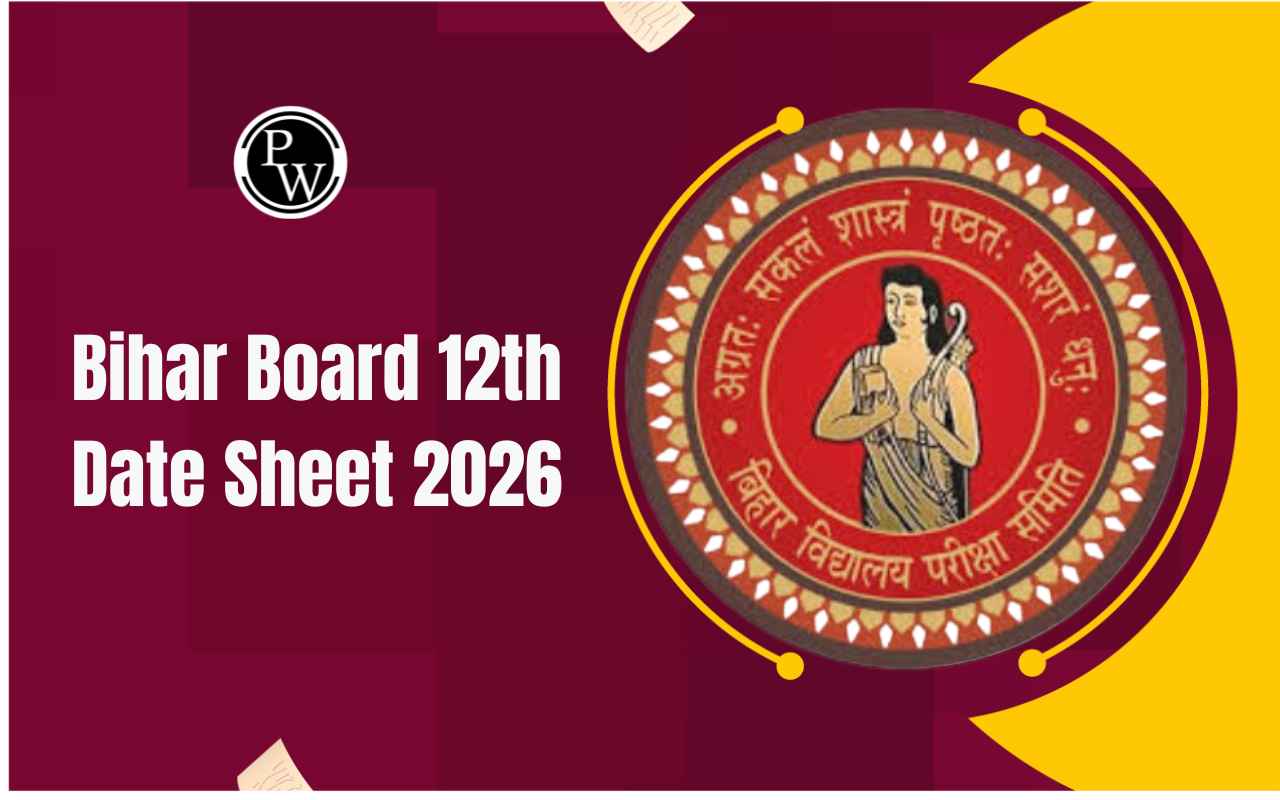
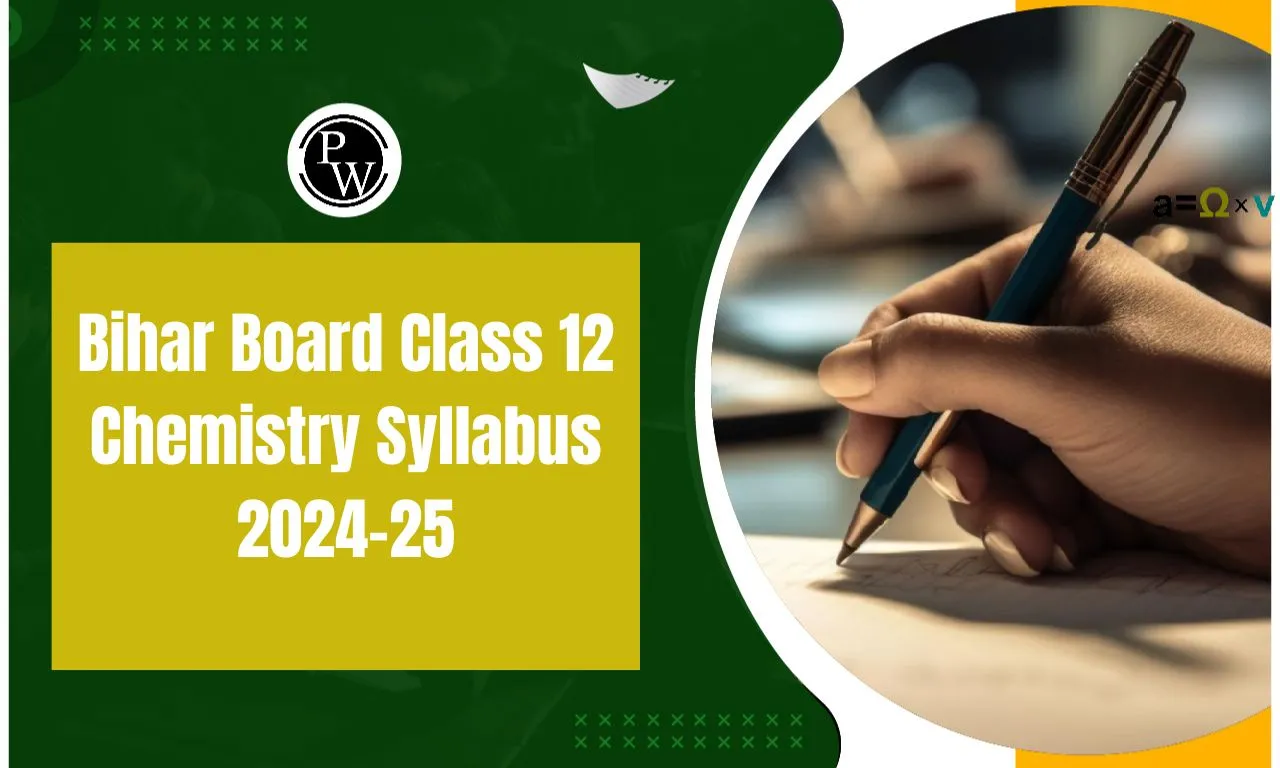
Bihar Board Class 12 Chemistry Syllabus 2025-26 gives students a clear understanding of all the chapters and topics that will be covered in the academic year. It helps students plan their studies in a structured way, ensuring they focus on both theoretical and practical aspects of the subject.
By following the updated syllabus released by the Bihar School Examination Board (BSEB) students can prepare efficiently for board exams and gain a deeper understanding of important chemistry concepts.
The syllabus also familiarizes them with the marking scheme and exam pattern, helping them manage time better during the exam. A well-planned study approach based on the syllabus ensures strong conceptual clarity and higher performance in the final examination.
Bihar Board Class 12 Chemistry Syllabus 2025-26 Overview
Bihar Board Class 12 Chemistry Syllabus 2025-26 by the Bihar School Examination Board provides students with important information to plan their preparation for the board exams. Key details about the syllabus are given below:
|
Bihar Board Class 12 Chemistry Syllabus 2025-26 Overview |
|
|
Particulars |
Details |
|
Authority |
Bihar School Examination Board (BSEB) |
|
Class |
12th |
|
Subject |
Chemistry |
|
Syllabus |
Class 12th Chemistry Syllabus 2025-26 |
|
Official Website |
|
Unit Wise Bihar Board 11th Chemistry Syllabus 2025-26
BSEB Class 11 Chemistry exam syllabus 2025-26 is divided into 17 units covering both theoretical and practical concepts. Students can check the key topics of each unit in the table given below for easy reference and exam preparation.
|
Bihar Board Class 12 Chemistry Syllabus 2025-26 Unit Wise |
||
|
1 |
Solid State |
Classification of solids, unit cell, packing, voids, number of atoms per unit cell, point defects, electrical & magnetic properties |
|
2 |
Solutions |
Types of solutions, concentration, colligative properties, molecular mass determination, abnormal molecular mass |
|
3 |
Electrochemistry |
Redox reactions, conductivity, electrolytic & galvanic cells, EMF, Nernst equation, fuel cells, corrosion |
|
4 |
Chemical Kinetics |
Rate of reaction, factors affecting rates, order & molecularity, rate laws, integrated rate equations, collision theory |
|
5 |
Surface Chemistry |
Adsorption (physisorption & chemisorption), catalysis, colloids, emulsions, Tyndall effect, Brownian movement, coagulation |
|
6 |
General Principles & Processes of Isolation of Elements |
Extraction and refining of Al, Cu, Zn, Fe, principles of concentration, oxidation, reduction, electrolytic methods |
|
7 |
Group I & II Elements |
Abnormal properties, diagonal relationship, reactivity, atomic & ionic radii, ionization enthalpy |
|
8 |
p-block Elements |
Groups 15–18: Nitrogen, Phosphorus, Oxygen, Sulfur, Halogens, Noble gases; properties, compounds, industrial uses |
|
9 |
d- & f-block Elements |
Transition metals, lanthanoids, actinoids; electronic configuration, oxidation states, properties, K₂Cr₂O₇ & KMnO₄ |
|
10 |
Coordination Compounds |
Ligands, coordination number, color, magnetic properties, shapes, Werner’s theory, VBT & CFT, isomerism, applications |
|
11 |
Haloalkanes & Haloarenes |
Nomenclature, C–X bond nature, substitution reactions, environmental effects (DDT, freons) |
|
12 |
Alcohols, Phenols & Ethers |
Preparation, nomenclature, physical & chemical properties, reactions, identification of alcohols, uses |
|
13 |
Aldehydes, Ketones & Carboxylic Acids |
Nomenclature, carbonyl group, preparation, properties, mechanisms, alpha hydrogen reactivity, uses |
|
14 |
Organic Compounds Containing Nitrogen |
Amines (primary, secondary, tertiary), cyanides, isocyanides, diazonium salts, reactions, applications |
|
15 |
Biomolecules |
Carbohydrates, proteins, enzymes, vitamins, nucleic acids; structure and functions |
|
16 |
Polymers |
Natural & synthetic polymers, polymerization methods, important examples (nylon, polythene, bakelite), biodegradable & non-biodegradable |
|
17 |
Chemistry in Everyday Life |
Chemicals in medicines, food, cleansing agents; uses and effects (antibiotics, preservatives, soaps, detergents) |
Class 11 Chemistry Syllabus BSEB 2025-26 PDF Download
Students can download the BSEB Class 11 Chemistry Syllabus 2025-26 PDF from the link below. The PDF contains a detailed list of all units, topics and practicals for the academic session helping students plan their studies and prepare effectively for board exams.
Class 11 Chemistry syllabus BSEB 2025-26 PDF Download
How to Download Bihar Board Class 12 Chemistry Syllabus 2025-26?
To download the Bihar Board Class 12 Chemistry Syllabus 2025-26 students can follow these steps:
-
Visit the official Bihar School Examination Board (BSEB) website: secondary.biharboardonline.com.
-
On the homepage, click on the Syllabus option in the menu bar.
-
From the drop-down menu select Class 12th.
-
A list of syllabus PDFs for different subjects will appear. Click on Chemistry to download the syllabus.
Bihar Board Class 12 Chemistry 2025-26 Exam Pattern
Chemistry question paper for Bihar Board Class 12 will include multiple-choice questions as well as short and long-answer type questions. The distribution of questions and marks is as follows:
|
Bihar Board Class 12 Chemistry Syllabus 2025-26 Exam Pattern |
|||
|
Question Type |
Total Questions |
Questions to Attempt |
Marks per Question |
|
MCQs |
42 |
35 |
1 |
|
Short Answer (Subjective) |
18 |
10 |
2 |
|
Long Answer (Subjective) |
6 |
3 |
5 |
Bihar Board Class 12 Chemistry Syllabus 2025-26 for Practicals
The practical exam for Bihar Board Class 12 Chemistry is conducted for 30 marks. It includes experiments from inorganic and organic chemistry, physical chemistry and qualitative analysis. Students should refer to the detailed list of experiments to prepare effectively.
|
Bihar Board Class 12 Chemistry Syllabus 2025-26 for Practicals |
||
|
S. No |
Experiment Topic |
Description |
|
1 |
Preparation of Inorganic Compounds |
Preparation of double salt of Ferrous Ammonium Sulphate or Potash Alum; Preparation of Potassium Ferric Oxalate |
|
2 |
Electrochemistry |
Variation of cell potential in Zn/Zn²⁺ |
|
3 |
Preparation of Organic Compounds |
Preparation of any one of the following: Acetanilide, Di-benzal Acetone, p-Nitroacetanilide, Aniline yellow, 2-Naphthol, Aniline dye |
|
4 |
Surface Chemistry |
Preparation of one lyophilic sol (starch, egg albumin, gum); Preparation of one lyophobic sol (aluminium hydroxide, ferric hydroxide, arsenous sulphide); Dialysis of lyophilic sol; Study of emulsifying agents in stabilizing emulsions |
|
5 |
Determination of concentration/molarity of KMnO₄ |
Titration against standard solutions of Oxalic acid or Ferrous Ammonium Sulphate (students prepare standard solutions themselves) |
|
6 |
Thermochemistry |
Any one: Enthalpy of dissolution of Copper Sulphate or Potassium Nitrate; Enthalpy of neutralization of HCl and NaOH; Enthalpy change during interaction between Acetone and Chloroform |
|
7 |
Chemical Kinetics |
Effect of concentration and temperature on reaction rate between Sodium Thiosulphate and HCl; Study of reaction rates for either: Iodide with Hydrogen Peroxide or KIO₃ with Na₂SO₃ (clock reaction) |
|
8 |
Chromatography |
Separation of pigments from leaves/flowers by paper chromatography and determination of Rf values; Separation of two cations in an inorganic mixture |
|
9 |
Qualitative Analysis |
Determination of one cation (Pb²⁺, Cu²⁺, Al³⁺, Fe³⁺, Mn²⁺, Zn²⁺, Co²⁺, Ni²⁺, Ca²⁺, Sr²⁺, Ba²⁺, Mg²⁺, NH₄⁺) and one anion (CO₃²⁻, S²⁻, SO₃²⁻, SO₄²⁻, NO₂⁻, Cl⁻, Br⁻, I⁻, PO₄³⁻, C₂O₄²⁻, CH₃COO⁻) |
|
10 |
Characteristic Tests |
Tests for carbohydrates, fats, and proteins in pure samples and foodstuffs |
|
11 |
Functional Group Tests |
Tests for unsaturation, alcoholic, phenolic, aldehydic, ketonic, carboxylic, and primary amino groups in organic compounds |
Bihar Board Class 12 Chemistry 2025-26 Practical Exam Pattern
The practical exam in Chemistry for Class 12 under BSEB is evaluated on multiple parameters. Students can check the marks distribution for each section below:
|
Bihar Board Class 12 Chemistry 2025-26 Practical Exam Pattern |
|
|
Evaluation Scheme |
Marks |
|
Volumetric Analysis |
8 |
|
Salt Analysis |
8 |
|
Project Work |
4 |
|
Content-Based Experiment |
6 |
|
Class Record and Viva |
4 |
Bihar Board Class 12 Chemistry Exam Preparation Tips
Here are some preparation tips for the Bihar Board Class 12 Chemistry Exam 2025-26:
-
Understand the entire syllabus and focus on chapters with high weightage like p-block elements and Aldehydes, Ketones and Carboxylic Acids.
-
Make a study plan covering both theory and practicals to manage time efficiently.
-
Practice using NCERT, reference books, previous year question papers and model papers.
-
Focus on conceptual understanding and make short notes for quick revision.
-
Regularly practice practical experiments and prepare for viva and projects.
Bihar Board Class 12 Chemistry Syllabus 2025-26 FAQs
Where can I download the Bihar Board 11th Chemistry Latest Syllabus 2025-26?
How many units are included in the Bihar Board Class 12 Chemistry Syllabus 2025-26?
What is the exam pattern of Bihar Board Class 12 Chemistry Syllabus 2025-26?
Are practical experiments part of the Bihar Board Class 12 Chemistry Syllabus 2025-26?


